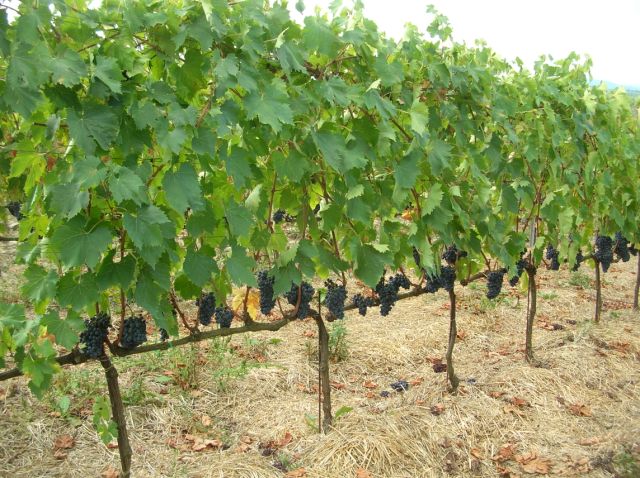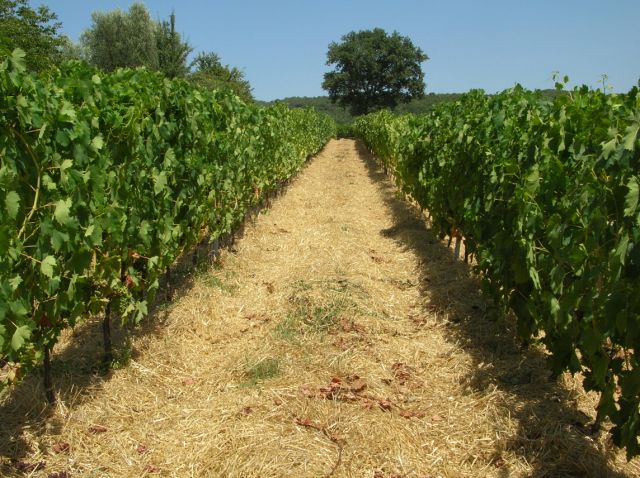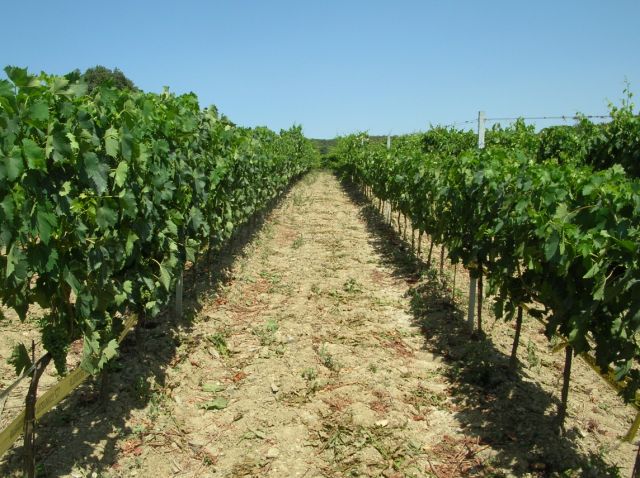16 May “The physiology of Sangiovese and water stress in Montalcino” by M. GATTI
During the “3rd international symposium on Sangiovese”, organised by ARSIA in Florence from 3rd to 5th December 2008, a report was presented on the studies in progress at Case Basse that “Il Chianti e le terre del vino” has published a summary of.
“Il Chianti e le terre del vino” (Italy – Jan/Feb 2009)
Matteo GATTI(1), Mario FREGONI(1), Fabio BERNIZZONI(1), Andrea PAOLETTI(2), Gianfranco SOLDERA(3), Massimo VINCENZINI(4)
(1)Fruit and Vine growing Institute, Università Cattolica del Sacro Cuore; (2)Aminea, Florence; (3)Case Basse winery, Montalcino; (4),Department of Agricultural Biotechnology, Università degli Studi, Florence
The effects of climatic change entail environmental conditions that differ greatly from the past, with more frequent heat, water and radioactive stress, better known as multiple summer stress. Because of stomatic regulation and other elements, the V. vinifera resists drought better than other species, but it is clear that stony vineyards with little organic matter that are densely planted and sown with grass, are particularly sensitive to such events. Therefore modern viticulture must adapt by selecting tolerant varieties and appropriate farming techniques. On this theme, in 2005, the Case Basse winery in Montalcino and the Viticulture Institute of the Università Cattolica in Piacenza set up a vast project to study climatic change and its implications on viticulture, with particular emphasis on canopy and soil management, fertilization and choice of training system. The first findings were presented at the Third International Symposium on Sangiovese, entitled “Terroir model for fine wines”, in Florence last December
The four-year experimentation on Sangiovese was carried out in the “Case Basse” vineyards (mature and tendentially clayey) and the “Institieti” vineyards (more recent and densely planted). Among the possible solutions for rationalising the use of water there have been five trials with different intensities of early trimming after fruit-set to 9 and 12 main leaves, total mulching with barley straw, as well as comparison with a control specimen in which the vines were not trimmed and the soil was worked on the surface. Lateral shoots were removed from the grape bunch area at an early stage, except for one trial where all shoots were eliminated. After budbreak, where foreseen, mulching was carried out with 2 kg/m2 of barley straw, removed at the end of the vegetative season and renewed every year (Fig. 1). During the test, meteorological parameters were recorded and then the bioclimatic indices were calculated. At veraison, petiolar diagnosis was carried out and gaseous exchanges on the leaf were measured by means of a portable analyser. Subsequently, the efficiency of water use was calculated. At the harvest, for each trial in the “Case Basse” vineyard, Professor Vincenzini from Florence University supervised the microvinifications and Dr Paoletti assessed the leaf composition of the canopy.
Vine growers will no doubt remember 2006 and 2007 as particularly critical years for the appearance of summer stress linked to high temperatures and poor rainfall. In actual fact, in 2006 the young plants in the “Institieti” vineyard were damaged by summer stress to such an extent that no difference was shown among the different trials (Fig. 2). However, the following year trimming to 12 main leaves gave us an answer in line with the control specimen. During experimentation in the “Case Basse” vineyard, the vines didn’t appear to be stressed and it can be said that, in that specific environment, mature vineyards with deep roots can resist stress.
From an agronomical point of view, early trimming to 12 nodes may contain water consumption and limit susceptibility to multiple summer stress in hot dry years, but the results found must justify the higher costs incurred compared to traditional management that is still a valid solution in normal years. On the other hand, a more drastic trimming to 9 leaves often leads to higher transpiration; the intervention is connected to the unknown quantity of the seasonal trend, since dry years can compromise the development of the foliage wall, whereas cooler and wetter years favour the development of lateral shoots after veraison and their competition with the bunch (Fig. 3). The complete removal of lateral shoots increased transpiration and reduced the level of alcohol in the wines so, overall, the intervention did not have a positive effect; healthy medium-sized bunches were observed but they were particularly exposed to hail and direct radiation and therefore more prone to burning and degradation of anthocyanins (Fig. 4).
Total mulching reduces evaporation and increases the absorption of phosphorous. The effect of direct radiation and light reflected from the straw on the temperature of the berries after veraison and on colour degradation, maximised the degradation of anthocyanins and the partial drying of the grapes. This model of soil management must therefore integrate summer pruning methods that guarantee adequate shade for the bunches (Fig. 5).
The studies carried out so far in hot dry years, have enabled us to recommend, for terroirs similar to Case Basse, canopy management with early trimming and shoot thinning from the grape bunch area, with the aim of containing transpiration and mulching with straw to reduce evaporation. In normal years trimming is not always necessary whereas early shoot thinning in the grape area is positive.







